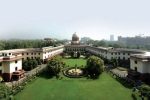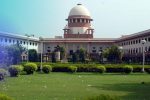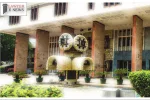Recording of reasons for the implementation of semi-judicial functions assures that there is no bias or bias:SC

D.D-JANUARY 05, 2021
Judicial scrutiny regarding the permissibility of the Central Vista Project1 of the Government of India. Diverse issues concerning the change in land use, grant of statutory and other permissions, environmental as well as heritage clearances etc., have been raised in these proceedings. The Petitioners have contended that the said permission was reduced to a mere formality. The Petitioners have relied on the Tender/Notice inviting bids for ‘consultancy services for comprehensive architectural and engineering planning for the development/redevelopment of Parliament Building, Common Central Secretariat and Central Vista’. The petitioners argue that the construction of the new Parliament building does not require approval/no objection from the Heritage Conservation Committee. This contention is contrary to the statutory Master Plan of Delhi and the Unified Building Byelaws, according to the petitioners. The petitioners should have asked for clarification from the committee. A group of petitioners has moved the Delhi High Court challenging the construction of the new Parliament building in the Indian capital. The petitioners argue that the construction does not require approval/no objection from the Heritage Conservation Committee (HCC). This contention is contrary to the statutory Master Plan of Delhi and the Unified Building Byelaws. The practice of recording a decision without reason in support cannot be severely deposed. Requirement for recording reasons is one of the fundamentals of good administration and governance. Recording of reasons, specially by administrative authorities performing quasi-judicial functions, ensures lack of bias and prejudice. Supreme court have not considered merits of the grounds given by the respondents for modification of the Master Plan with regard to redevelopment of the Central Vista. The respondents have stated that hutments or temporary barracks or stables, built during World War II, occupy an area of over 90 acres of land. Central Vista Development and Re-development Plan would ensure that formal central secretariat with all ministries is located at a single location for efficiency and synergy of function. In all about 51 Ministries are to be located in 10 buildings to be constructed in the Central Vista. Supreme Court referred to the contentions of the petitioners and respondents in some detail but would not comment on merits. Matters pertaining to heritage, architectural, functionality etc. are for experts and specialists in the field to examine and guide. Our interference is on account of procedural illegalities and failure to abide by statutory provisions and mandate. The Central Government/Authority would put on public domain on the web, intelligible and adequate information with drawings, layout plans, with explanatory memorandum etc. within a period of 7 days. Objections/ suggestions can be sent by email or to the postal address indicated/mentioned in the public notice. Heritage Conservation Committee would also examine the issue of grant of prior permission/approval in respect of building/permit of new parliament on Plot No. 118 at Rajpath. Final decision or outcome will be communicated to the local body after and only if, the master plan modifications are notified.
RAJEEV SURI
Versus
DELHI DEVELOPMENT AUTHORITY & ORS.






